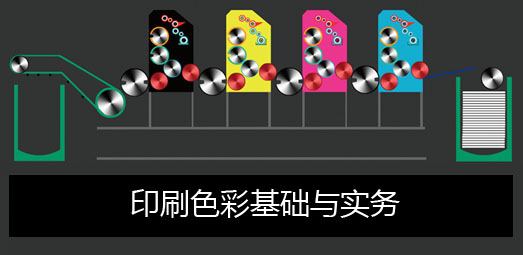
当前课程知识点:Entrepreneur Growth Plan > 8 Product Development and Design > 8.2 Test hypothetical conditions > 8.2.1 Meaning of testing hypothetical conditions
返回《Entrepreneur Growth Plan》慕课在线视频课程列表
返回《Entrepreneur Growth Plan》慕课在线视频列表
各位同学
下面我们来看一下本章第二个部分的内容
测试假设条件
在上一步确定重要
假设条件之后
我们要设计
实验方式
要用科学的方法
以成本最低廉
速度最快最简单的方式
对他们进行逐个的测试
测试假设条件的
科学方法
是在一个清晰的假设前提下
预测要发生的事情
接着再用实证法进行验证
正如科学实验是以科学的
理论为基础的
创新创业的实验则是
以创业愿景
为指引的
是一样的道理
每个实验的目的都是为了
要证实你的产品
是否符合你的创业愿景
从建立一套围绕创业愿景的
可持续性的业务
这个原则上来出发的
实际上测试的过程
并不需要开发具体的
产品或软件
更多的是依靠逻辑思维能力
进行分析和判断
前面严格的原始市场调查
还有对用户形象的
持续关注
已经为我们提供了很好的基础
所以当你开始测试
假设条件的时候
只要保证这些
假设条件
都和你的产品高度相关
这就可以了
比如说举一个小例子
有一个学生团队
他想设计一款能够让用户
通过手机的天气预报选择衣着
设计这样的产品
他们提出了一个假设条件
是这样的
他们假设25岁到34岁
这样的一个人群
作为智能手机的这样的用户群体
可以通过手机天气预报
这样的服务来选择衣着
这也是他们设定的假设条件
实际上包含了两个
部分的分解
首先第一部分
也就是假设条件之一
也就是这句话前面的半部分
那就是使用
智能手机的人
通过手机了解天气预报
这个是条件之一
假设条件之二
也就是这句话的后半部分
利用手机天气预报
服务的人
他们可以会根据这样的天气预报来决定
自己的衣着
其实这是两个方面的假设条件
要测试第一个假设条件
他们找到的目标顾客是在哪里
比如健身房
餐厅或者是目标顾客
工作的地点附近
人行道
询问他们手机上是否装有
天气预报
这样的软件
以及他们是否经常
使用天气预报的服务
测试的结果是
90%的受访者
都做出肯定的回答
也就是说证明了什么
证明了第一个
假设条件是成立的
然后该团队还研究了
调查公司的一些资料
他们发现天气预报软件是
智能手机用户使用的
最频繁的程序
进一步验证了这一个假设
这个是对于我们第一个假设条件
而第二个假设条件
测试结果有一些不同
有什么不同
在第一组目标顾客当中
只有不到30%的人
会根据手机天气报
选择出门时
穿什么衣服
这是第一组顾客
而第二组的用户有70%
以上的人会这样做
什么原因
后来他们发现第一组用户
都是男性
而第二组用户
都是女性
这表明该假设条件存在
重要的细分工作
而这一点是他们在之前的
一些市场细分环节是
没有做到的
由此可见
只需要简单快速的实验
这个团队就可以发现极为重要的
但是却被忽略的环节
在此基础上
他们对目标顾客进行细分
从而有效的降低了
创业的风险
通过这个例子大家也可以看出
确定这样的重要
假设条件
并且测试他们有了更加清晰的
这样的了解和
认识
下面这个是学生团队
的一个实验
我们来看一个企业
实战当中的
确定和测试重要假设条件的案例
我想大家都听过柯达公司
都听过对吧
成立于19世纪的80年代
它是世界上最大的胶片供应商之一
2004年
随着我们的数码
科技的发展
柯达决定停止生产
传统胶片的相机
然后把注意力转移到哪里
转移到数码市场
所以柯达成为
起死回生成功转型的
全球性技术企业
柯达它有一项最重要的
网上业务叫做柯达影廊
叫做Kodak Gallery
这样的一个项目该项目致力于为用户
提供一个网上的活动相册
这样的一个产品
其中包含有装饰性的文字图片
然后适用于婚礼
大型会议
聚会等等多种不同的场合
然后他们致力于为用户
提供网上的照片 分享
这样的一个服务
分享服务具有
严格的隐私保护
只可以在参加相同活动的
与会者之间进行交流
项目团队在
开发产品时
提出了这样的一些假设
主要有两个假设
柯达影廊假设之一
项目团队认为顾客
想要创建相册
他们假设好顾客都
想要创建相册
第二个假设条件
项目团队认为活动参与者
会把这个照片上传到
由朋友或有同事
创建的活动相册中
第一部分他们想要创建
第二部分是他们会把照片上传到相册当中
有这两个假设条件
所以他们开发了一个
相对简单的原型
相册的原型
并且把这个产品描述给了
相关的顾客
对以上的这两个假设条件进行测试
用户反馈主要有以下的这几点
同学们可以来看一下
用户反馈有以下哪几点
首先第一
用户反馈
这些带有装饰性的文字
和图片比较难以理解
人们看不到它的美妙所在
但是他们整个的开发过程却非常的麻烦
这是第一点
第二点就是创建相册
并不像他们预期的容易
所以说没有一个早期顾客
能够建立起这样一个新相册
建立相册的过程还是很难的
第三点用户反馈
是他们抱怨这个产品缺少
很多的重要功能
就是用户想利用的
一些功能
他们还没有被开发出来
大家可以看出这些结果
当你得到了这样的测试结果之后
可能会让你感觉到有些的沮丧
问题比较多
但认可产品设计存在缺陷
和种种问题的同时
他们发现用户对创建活动相册
的这样一个过程其实是跃跃欲试的
他们非常感兴趣
说明这个就是一条
非常有价值的信息
于是项目团队通过
改进产品设计
发布了产品的公测版
并且通过继续学习
和反复实验
早期用户充满了热情
使用者的数量
也大大的增加
最终这个项目成为一个
拥有7500万用户的
成功的产品
但是项目的负责人库克却说
成功不是实现一项
产品的功能
成功是学会如何
解决顾客的问题
这个就是我们来测试
产品的假设条件的
一个案例
对于这个案例
我们可以分析出这个
产品测试过程
它对于整个开发过程中
是有重要意义的
-1.1 The era of the entrepreneur
-1.2 Entrepreneur is not natural-born
-1.3 Key to entrepreneurial success
-1 Entrepreneurship is A Learnable Ability
-2.1 Build the ambition
--2.1.1 Build the ambition-entrepreneurship
--2.1.2 Build the ambition-sense of social responsibility
--2.1.3 Build the ambition-entrepreneurial awareness
-2.2 The power of thinking
--2.2.1 The secret of thinking
--2.2.2 Thinking power 1: innovative thinking
--2.2.3 Thinking power 2: system thinking
--2.2.4 Thinking power 3: dialectical thinking
--2.2.5 Thinking power 4: strategic thinking
-2.3 Abilities of entrepreneurs
--2.3.1 Types of entrepreneurs
--2.3.2 Composition of entrepreneur abilities
--2.3.5 The self-management ability
-2 Cultivation of Internal Skills of Entrepreneurs
-3.1 Know yourself: know your own characteristics
-3.2 Know the others: environment and resources
--3.2.2 Entrepreneurial opportunity
-3.3 Decision-making: orientation of entrepreneurship
-3 Self-Positioning of Entrepreneu
-4.1 A story of enclosure for raising sheep
-4.2 Market segmentation
--4.2.1 Divergent thinking: find out all your potential customers
--4.2.2 Efficient market: you don’t have to serve all your potential customers
--4.2.3 Market research: a good way to select efficient markets
-4.3 Market launch: have you focused?
-4.4 End users: bring you cash flow
-4.5 Market size: how to make the initial estimate
-4.6 User image: tell a good story about users
-4 Where is Your Customer
-5.1 Complete product cycle application cases
-5.2 Advanced product specification
-5.3 Quantify value positioning
-5.5 Describe competitive position
-5 What Can You Offer Your Customers
-6.2 Determining customer decision-making unit
-6.3 Mapping the process of acquiring paying customers
-6.4 Estimating the follow-up market size
-6 How do Customers Buy Your Products
-7.2 Basic classification of business models
-7.3 Defining pricing strategy
-7.4 Estimating customer lifetime value
-7.5 Estimating the cost of customer acquisition
-7 How to Make Money from the Product
-8.1 Determining the important hypothetical conditions
-8.2 Test hypothetical conditions
--8.2.1 Meaning of testing hypothetical conditions
--8.2.2 How to test hypothetical conditions
--8.2.3 A correct view of the test result
-8.3 Define minimum viable business product
--8.3.1 Definition and value of minimum viable business product
--8.3.2 Core elements and definition method of minimum viable business product
-8.4 Verify the customer will pay for the product
--8.4.2 Description of a minimum viable business product validation case
-8 Product Development and Design
-Final Test





